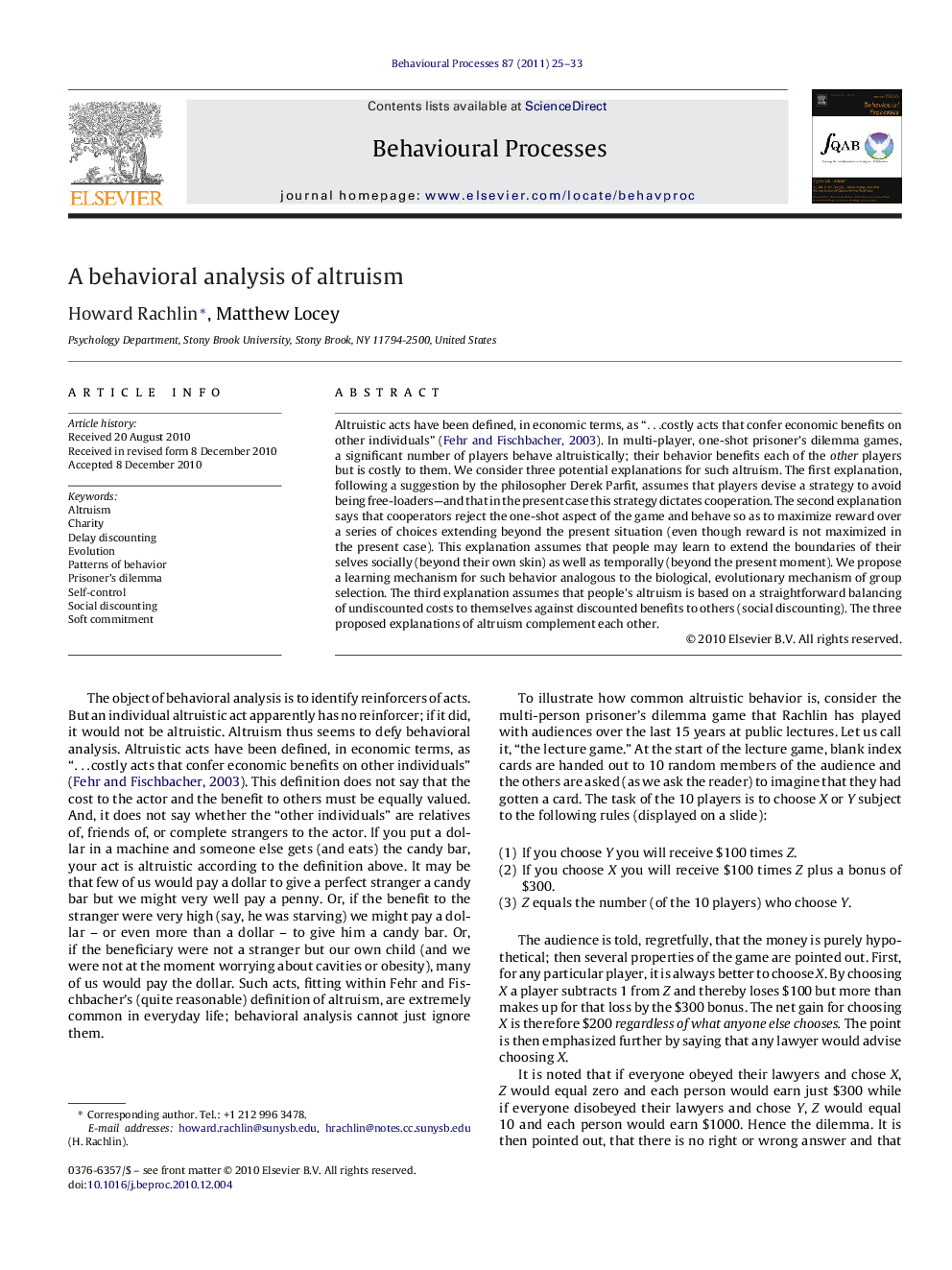| کد مقاله | کد نشریه | سال انتشار | مقاله انگلیسی | نسخه تمام متن |
|---|---|---|---|---|
| 2427045 | 1105939 | 2011 | 9 صفحه PDF | دانلود رایگان |

Altruistic acts have been defined, in economic terms, as “…costly acts that confer economic benefits on other individuals” (Fehr and Fischbacher, 2003). In multi-player, one-shot prisoner's dilemma games, a significant number of players behave altruistically; their behavior benefits each of the other players but is costly to them. We consider three potential explanations for such altruism. The first explanation, following a suggestion by the philosopher Derek Parfit, assumes that players devise a strategy to avoid being free-loaders—and that in the present case this strategy dictates cooperation. The second explanation says that cooperators reject the one-shot aspect of the game and behave so as to maximize reward over a series of choices extending beyond the present situation (even though reward is not maximized in the present case). This explanation assumes that people may learn to extend the boundaries of their selves socially (beyond their own skin) as well as temporally (beyond the present moment). We propose a learning mechanism for such behavior analogous to the biological, evolutionary mechanism of group selection. The third explanation assumes that people's altruism is based on a straightforward balancing of undiscounted costs to themselves against discounted benefits to others (social discounting). The three proposed explanations of altruism complement each other.
Research highlights▶ We explain altruism as the outcome of a cognitive strategy to resolve ambiguity. ▶ We also show that an individual altruistic act may be an element in a long-term highly valued behavioral pattern. ▶ We also explain altruism in terms of social discounting. ▶ All three of the above explanations of altruism are compatible with each other.
Journal: Behavioural Processes - Volume 87, Issue 1, May 2011, Pages 25–33